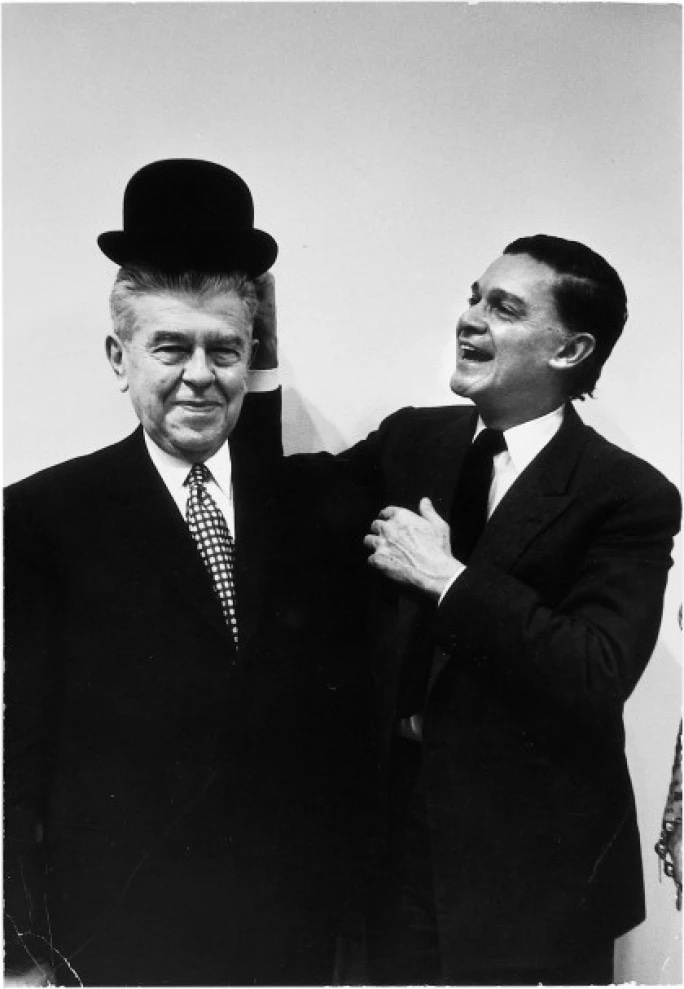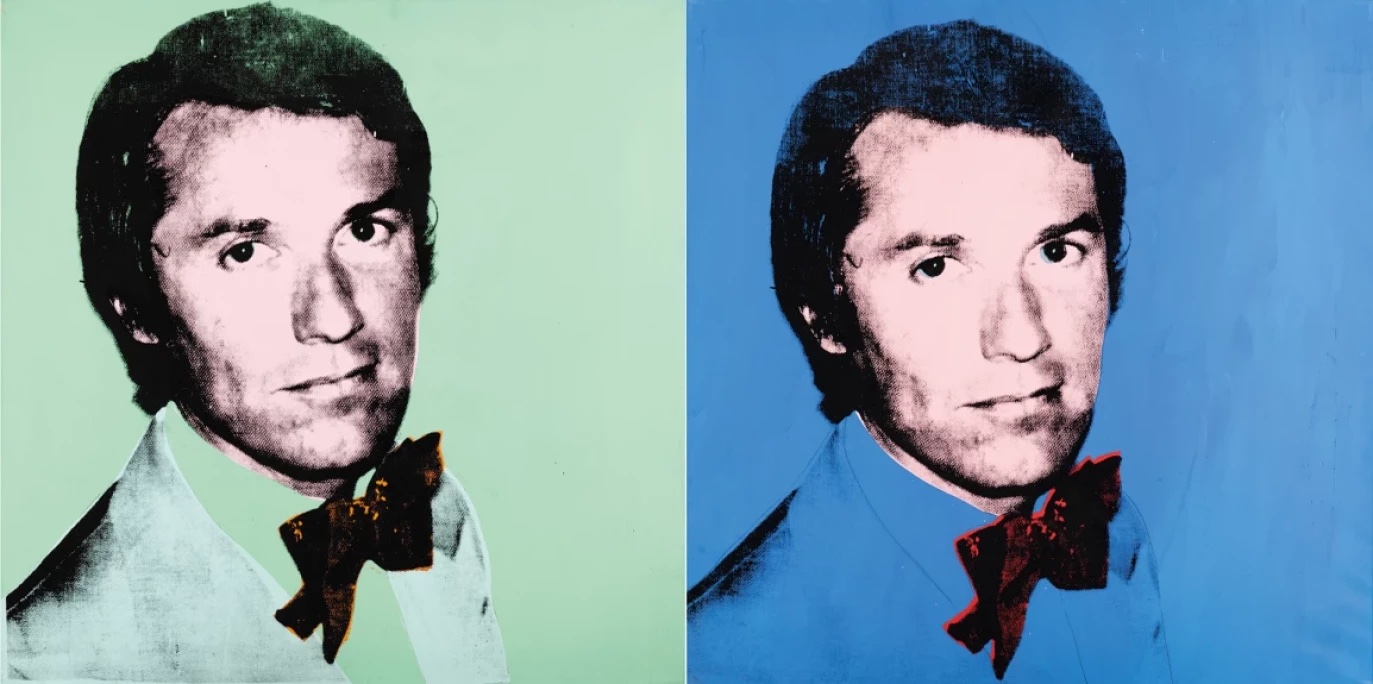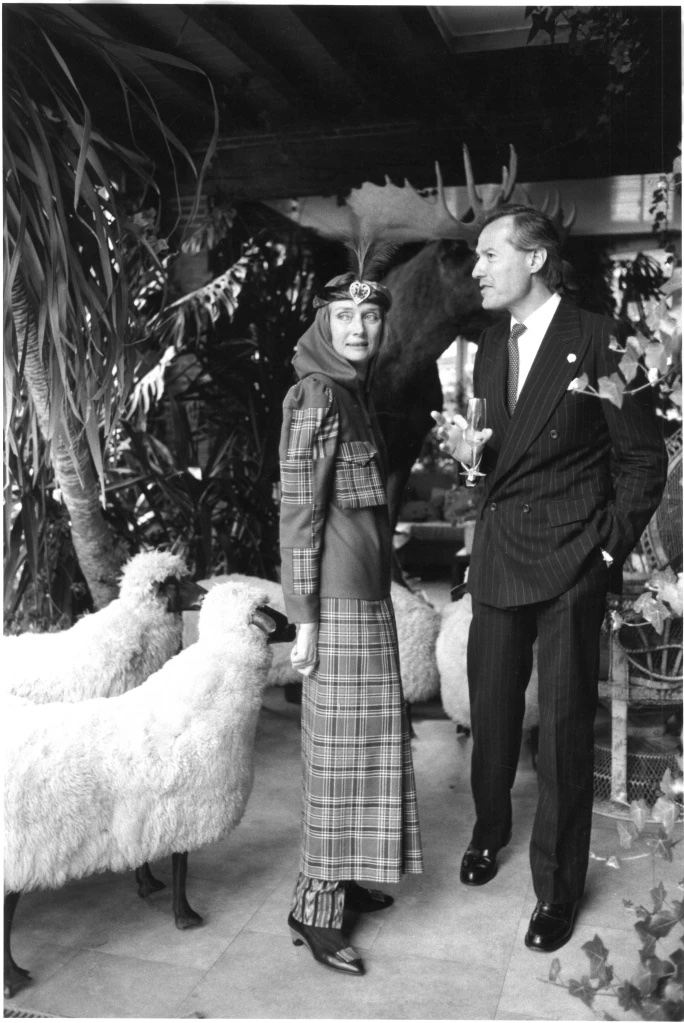As Alexander Iolas’s partner of 25 years, André Mourgues had a uniquely close perspective on the life and work of that much-loved, hyper-influential figure of the art world. Technically, Mourgues handled public relations for the Paris-based Iolas gallery from 1964 until it closed, but in reality, he accompanied Iolas on his many projects around the world, moving in the elite social, artistic and intellectual circles. As André Mourgues’s extraordinary collection came to auction, we reflect on his and Iolas’s captivating story – a partnership dedicated to a love of art and artists.
Just a whisper away from the Champs-Élysées in Paris is an Art Deco corner building, whose top floor penthouse is filled with rare treasures. A clandestine eyrie, perched at the very summit of the city, this apartment is home to André Mourgues.
At 83 years old, Mourgues is still remarkably similar to the young man who, fresh from military service, met and fell in love with the infamous art dealer Alexander Iolas, embarking on a quarter-century romance and a collaborative partnership that changed the world of contemporary art forever.
‘I was just 25 when I met Iolas,’ he told The Guardian in March 2022 ‘And it was the start of one long party of the spirit!’

ANONYMOUS PHOTOGRAPHY (LALANNE ARCHIVES)
This ‘party of the spirit’ thrust Mourgues into the heart of global art society, amidst Dadaists, Surrealists and avant-gardists, society glitterati, revolutionary provocateurs, aristocracy and artists, writers and intellectuals. And outside their Parisian base, the pair travelled the world, encountering a non-stop procession of Texan oil barons and Rajasthani royalty, Park Avenue dowagers and Portofino palazzi (and Andy Warhol’s travelling circus).
‘I was just 25 when I met Iolas. And it was the start of one long party of the spirit!’
ANDRÉ MOURGUES
But away from the glitz and hubris was the art. Art drove Iolas, it fuelled his ascent from being a dancer to the most famous art dealer of his day. He was perpetually influential, unafraid to loudly damn or praise, regarded as something of a guru by tastemakers as being the ultimate arbiter of what was in or, with career-ending precision, out.
He launched the contemporary model of the pan-international global gallery, simultaneously running highly successful spaces in Paris, Geneva, Milan and New York. And he held the unique accolade of being the man who gave Andy Warhol his first show – ‘Fifteen Drawings Inspired By Truman Capote’ – at a small Manhattan bookshop in 1952 and his last, the aptly-titled ‘The Last Supper’ in Milan in 1986.

He transformed René Magritte from a Belgian oddity to worldwide celebrity, and likewise saved numerous Surrealists from penury and obscurity, making vast sums of money for Max Ernst, De Chirico (and himself) in the process. But there is more to the glorious reign of Iolas, for his taste – and talent for selling- ranged from the lushest of campy Neo-Romantics to most theoretical of conceptualists, from Eugène Berman to Richard Hamilton, Harold Stevenson to Gene Beery.
Alexander Iolas was born Constantinos Coutsoudis to a wealthy Greek family in Alexandria, on a date he refused to divulge (although a broadly-accepted consensus places his arrival in 1908). Rejecting his family’s cotton-trading business, he pursued an successful career as a ballet dancer, studying and performing in Berlin and Paris, before moving to the Unites States at the behest of President Roosevelt’s granddaughter Theodora.

He opened the first of many eponymous galleries in New York in 1954. And a key part of its success was not only Iolas’s reviving work by key Surrealists, but also promoting a sort of late-late-Surrealism, which played in and out of such contemporary movements as Neo-Dadaism, Pop and Arte Povera. Thus, whether with enchanting sculptures by les Lalanne, the wordplay of Ed Ruscha, a horned rhino by Pino Pascali or morbid fleshy relics of Paul Thek, there was a curious stylistic thematic linking the animal, vegetable and physical body. Even Joseph Beuys, an artist with similar alchemical-corporeal concerns, developed something of an obsession with Iolas, fixating on him like a creepy art-world stalker.

At the height of Iolas’s dominance of the art world in the 1960s and 1970s, it seemed almost every important artist of the time was in his glittering orbit, whether Nouveau Réalisme stars like Tinguely and Niki de Saint Phalle, or such disparate talents as Martial Raysse and Kounellis. It would be easier to try and name an artist who did not collaborate with Iolas than exhaustively list all those who did. And as well as the global superstars, he took pains to promote Greek artists, such as Fassianos, Marina Karella or the consistently underrated Ghika.
His sincerity and taste drew the world’s collectors to him – and once admitted to the inner sanctum, stayed equally loyal, from the Agnellis to the De Menils, from Schlumberger to Rothschild to Karpidas – they had absolute faith in whatever he insisted – occasionally with high drama – they should absolutely have now, or that they absolutely needed next.
When a major Warhol exhibition opened at the Sonnabend gallery in Paris in 1974, the three most striking portraits were those of Yves St Laurent and David Hockney, and the distinctive visage of Iolas himself. But today, while YSL and Hockney are still rightly known worldwide, Iolas has almost vanished from the public eye. But the core of his memory, the remainder of his renowned collection is here at this same Parisian penthouse, as long-guarded by his long-term partner, Andre Mourgues.

For Mourgues, like Iolas himself, is a true collector. His delight in gathering the most fascinating people as well the most important works of art makes Mourgues, the true heir to Iolas’s legacy. In this sale at Sotheby’s, we surveyed a life’s passion for creativity, summers of joy found in these works, all purchased by Iolas, or bought directly from the artists. From a majestic sculpture by Max Ernst and a major drawing by René Magritte to works by Andy Warhol, Ed Ruscha and Victor Brauner – not to mention a full selection of antiques – the collection tells of a life dedicated to a love of art and artists.

And as Morgues himself says fondly of his late partner, ‘Iolas was someone completely positive, he loved everything, and he loved everyone, within reason, he was so positive in his love of life. But, above all else, his real religion was art.’
Original Article by Adrian Dannatt | Republished from Sothebys.com
Cover image: Published in Vogue Paris, August 1965 | From left to right: France Raysse, Martial Raysse, Jean Tinguely, Niki de Saint Phalle, Brooks Jackson, Bénédicte Pesle, Rotraut Klain, Alexandre Iolas and André Morgues surrounded with works by Martial Raysse.